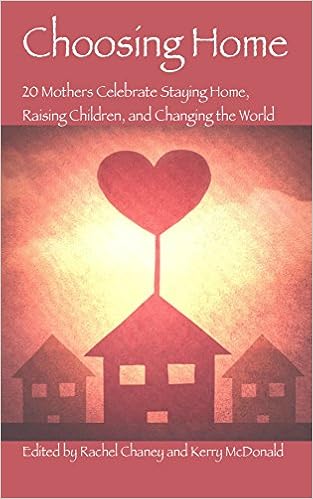Most of us have grown up and been schooled to think that learning is something passive--something that someone does to someone else--rather than an active, innate, natural process.
My first inkling about self-directed learning came when I was a graduate student at Harvard exploring alternative education. At the time, and to some extent still, the HGSE's focus on alternative education was limited to charter schools, but there was a small but passionate group that cared about the term child-led learning. This is still different, in many ways, from true self-directed learning but the ethos is the same: let the children decide, let the grown-ups guide.
It wasn't until many years later, when I became a mom and then a homeschooling mom, that I fully understood and appreciated the power of self-directed learning.
But what it is? And how does it differ from the way most children now learn?
The short answer is that all children, all people, are self-directed learners. It is a natural part of being human. We are born with the instinct to explore and discover and synthesize our world. We are born to be active learners. This process is interrupted and altered when children go to school and learn to be passive learners, when they internalize the false belief that one must be taught in order to learn.
Here is an example that highlights the self-directed learning difference:
Yesterday, the kids scootered to the nearby Harvard Museum of Natural History. When we arrived, there was a school group sitting quietly listening to the rules and requirements of their field trip visit. My gang scattered to their favorite corners of the museum: the tarantulas, the hissing cockroaches, the sifaka lemur (thank you Wild Kratts), the new underwater exhibit, and so on. My two oldest, at 9 and 7, are now full participants in each exhibit, reading what interests them about each animal and habitat and making their own connections about what they see and know. My 5 and 2 year olds are happy to explore and point out and ask me questions about what the signs say.
By the time the school group (which consisted of kids roughly my oldest daughter's age) caught up to us, I noticed that they had worksheets and pencils. On the worksheets were specific items they were expected to find at the museum, specific sketches they were expected to draw, specific connections they were expected to make.
This is a prime example of the stark difference between self-directed learning and conventional schooling. Self-directed learning has no agenda, no top-down requirements, no arbitrary curriculum determining what another human should think and know, and how.
Boston College research professor, Dr. Peter Gray, writes regularly about the limitations of self-directed learning in schools in sharp contrast to children who are unschooled. He states:
"No matter how liberal-minded the teacher is, real, prolonged self-direction and self-motivation is not possible in the classroom. In this setting, children must suppress their own interests, not follow them. While children out of school learn what and because they want to, children in school must learn or go through the motions of learning what the teacher wants them to learn in the way the teacher wants them to do it. The result is slow, tedious, shallow learning that is about procedure, not meaning, regardless of the teacher’s intent."
This slow, tedious, shallow learning was obvious in yesterday's museum visit. The schooled children went about the motions of completing their worksheets, because they had to, without the opportunity to truly explore the museum in their own way, to ask their own questions, to make their own connections, to sketch or not sketch what they observed. They were following someone else's agenda, not their own, leading to learning that was all about "procedure, not meaning, regardless of the teacher's intent."
What makes this example even more glaring is that it occurred in a museum which, by its beautiful design, is a symbol of self-directed learning. Museums are intended to foster self-paced exploration and discovery, without the need for top-down direction.
Imagine if you arrived at a museum and the docent gave you a worksheet and told you to find these specific items in the exhibit halls, sketch these particular images, and make these specific connections about what you saw. You would be outraged! (At least I hope you would.) You go to a museum to discover interesting things, and to linger at various exhibits or sections that most appeal to you. You would not want to be constrained by someone else's vision of what your museum experience should be. Now, if the docent gave you a worksheet or a visitor guide that had some questions or suggestions, that's fine. You could use it or not, but it would not be a requirement of your visit and would not define your museum experience.
Self-directed children are given the freedom to pursue their own interests, to ask their own questions, and to make their own connections, without external coercion. They are provided resources and opportunities--that's our job as grown-ups--and then allowed to learn in their own, natural way.
Just like self-directed adults do.
Imagine that.
























This might just be my favorite post of yours! Love it!
ReplyDeleteIt's all so true. And even though I know it isn't possible to fully incorporate the same free self-direction from a public education standpoint, I hope more educators and people IN the system are realizing the importance and trying to add more free, individual-powered learning back in. That is my hope, since it's sad to think of so many children's dampened interests.
ReplyDeleteHi Kerry! (Nice name, by the way. :) ) Unschooling fascinates me and so I ask this, not necessarily to challenge, but to learn. First off, my kids attend a Montessori school so I've very much bought into the notion that self-guided learning is way to go. But regarding complete and total self-guided learning, I'm not sure. There are many things that I've learned in life by being taught that I'm not sure I would have stumbled upon on my own. For example, I didn't love math growing up but when I got to college I was required to take an economics class for my pol sci major and discovered that the subject fascinated me. Previously I thought economics is all math so I wouldn't like it. This is just one example I can think of. Would love to know your thoughts on this. - Kerry
ReplyDeleteKerry's point is well founded. Research has shown that students do need guidance within a framework of self-directed learning to 'encounter' information necessary for a well-rounded view of history/science/civics/math/language/literature/etc... On their own they will not delve into this wide range of information in an in-depth manner. There are programs that provide a self-direct approach that is developmentally based, such as authentic Montessori schools, which teach the skills for self-direction (there are skills involved in managing your time/effort) and allow children to explore the world in a manner that suits their personal needs and interests.
ReplyDeleteHi Kerry,
ReplyDeleteI absolutely agree with you when you say that self-directed learning (SDL) is a tricky concept to grasp. I too was brought up in an education system wherein students only learn through the teacher and none of this 'active-learning', 'child-centred' ideologies.
The theory behind SDL has been around for centuries. Educational psychologists such as Maslow, Rogers and Dewey have been in favor of ‘progressive education’, or some might call it ‘open education’ or ‘humanistic education’. Yet, it seems as though to this day, most educational systems around the world are still stuck in the traditional way of teaching. According to copious scholars, becoming a genuine self-directed learner is promoted to be one of the most critical skills for the 21st century learner (Rashid & Asghar, 2016; Claxton, Chambers, Powell, & Lucas, 2011). As you said, we are born to be active learners where we pursue our own interests, ask our own questions and dive into an inquiry as we make our own connections in the world. Although it is important to give students control over their learning, Claxton et al., (2011) mention that learners need to know themselves well in order to make effective learning decisions.
I find your example -stating the clear difference between self-directed learners and passive learners, interesting. I personally think that education shouldn't be so specific that there is no room for exploration. It seems as though the group of students you encountered during that day did not have the opportunity of just that. However, I must emphasise that I also believe that it is pivotal that there is some sort of instructional part in such a learning experience. Students need to be directed, supported and guided through their journey, until we know as adults that they are able to genuinely and effectively do so independently.
I found this quote by Atkinson (1972, p.388) particularly interesting: "one way to avoid the challenge and responsibility of developing a theory of instruction is to adopt the view that the learner is the best judge of what to study, when to study and how to study". He mentions however that this is quite different from using the learner's judgement as one of the many tools when deciding on what is to be learnt, as opposed to giving them the full control. Claxton et al., (2011) add that it is normal that education has some degree of instructional strategies but at the same time, should leave opportunities for students to explore and inquire on their own questions. This provides them the chance to take control of their own learning. This is when teachers are helpful, but they do not rescue the students from adversity. Instead, they encourage them in order to build up the student's learning stamina. The teacher’s role is to be the facilitator in the classroom, rather than as an information transmitter. I think the ultimate goal really is for teachers to become learners and learners to become their own teachers.
Thank you for a really good read Kerry.
Reference List
Atkinson, R. (1972). Ingredients for a theory of instruction. American Psychologist, 27, 921–931. doi:10.1037/h0033572
Claxton, G., Chambers, M., Powell, G., & Lucas, B. (2011). The Learning Powered School:
Pioneering 21st Century Education. Victoria, Australia: Hawker Brownlow Education.
Rashid, T., & Asghar, H. M. (2016). Technology use, self-directed learning, student engagement and academic performance: Examining the interrelations. Computers in Human Behavior, 63, 604-612.